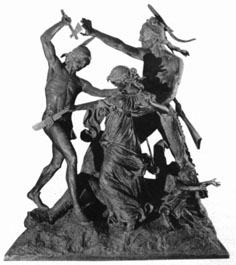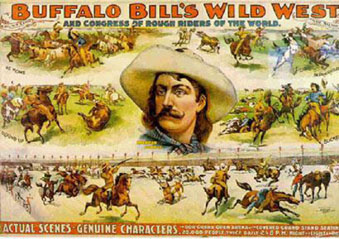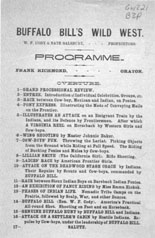|

 |
Monuments to a Lost Nationby Theodore J. Karamanski |
<Reprinted from Chicago History, Spring 2004>
The connection between urban labor unrest and the last gasps of formal Native American resistance to the United States was both ironic and disquieting to men such as Pullman. Art critics praised Carl Rohl Smith's sculpture for the realism of its figures. The artist obtained his models by visiting Fort Sheridan, the United States Army base established in Chicago's northern suburbs after Haymarket to maintain urban order. At the fort, Rohl Smith encountered survivors of Wounded Knee, whom he described as "Indians of the most untamed sort." The men who fought what was perhaps the last organized effort against American continental expansion served as the fierce models for the Fort Dearborn Massacre, making the figures an unstated tribute to Native American resistance. Some
Americans compared newly arrived, working-class immigrants
to the land's first inhabitants. The New York State Sun, writing
in the wake of Haymarket, intoned, "Such foreign savages,
with their dynamite bombs and anarchic purposes, are as much
apart from
the rest of the people of this country as the Apaches of the
plains." The
association became even more apparent a year after the statue's
dedication when the Seventh Cavalry, which had fought Indians
so fiercely at
Little Big Horn and Wounded Knee, came to Chicago to quell the
Pullman riots of 1894.
Forward to the next page of this essay Back to the previous page Back to Online Essays |
| |
Department
of Anthropology |
copyright © 2002
University of Illinois, All rights reserved. |


